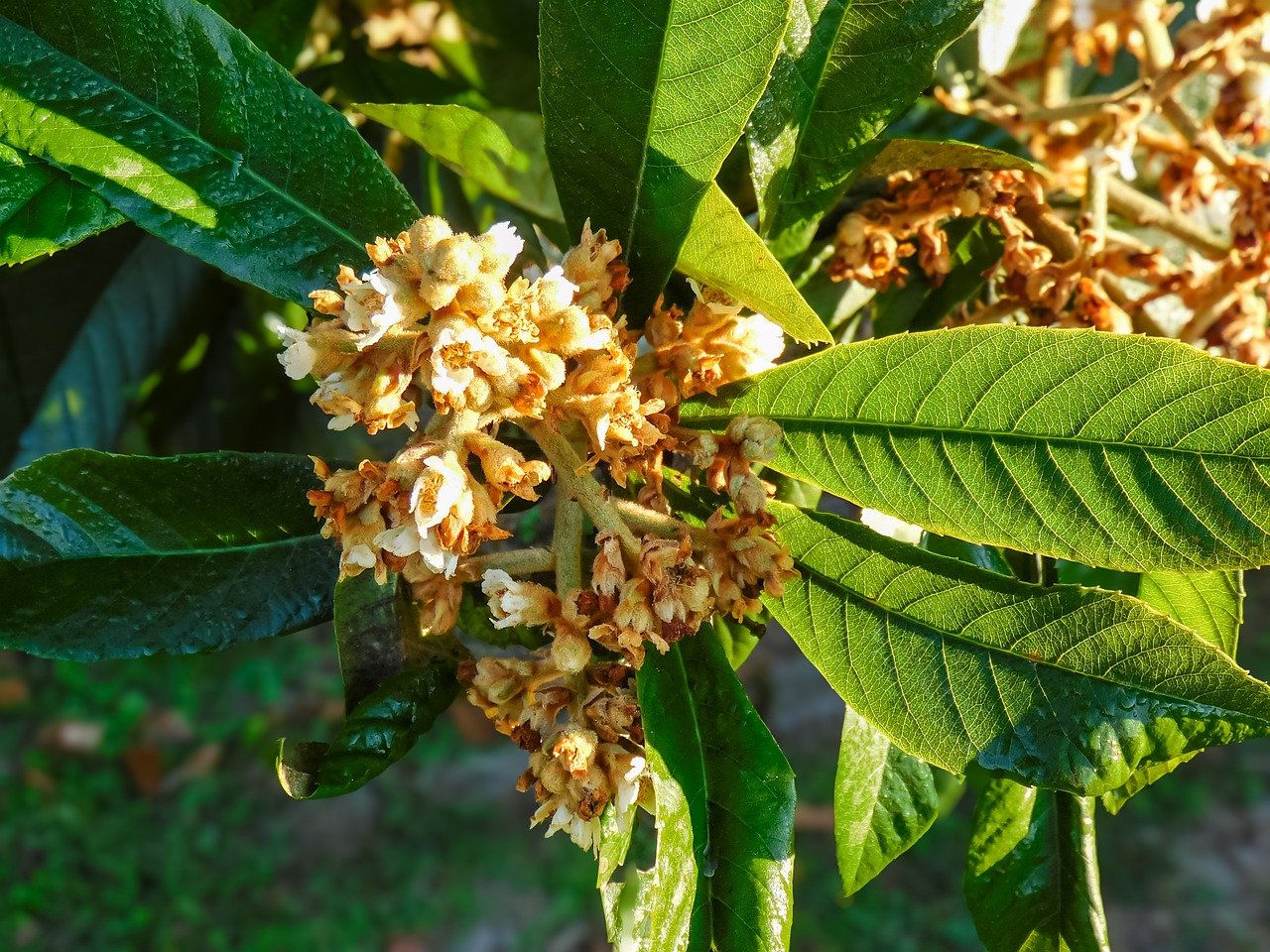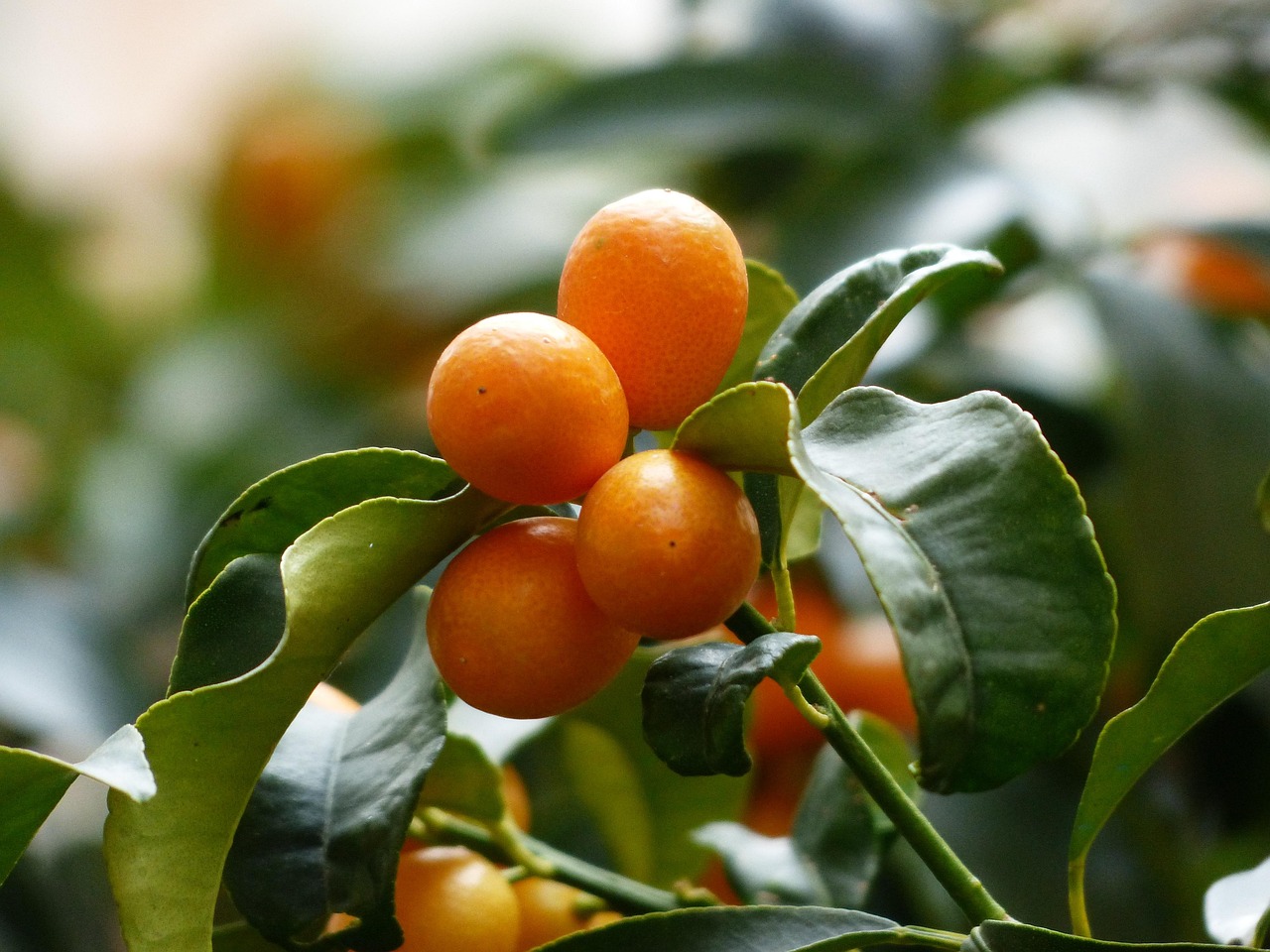Kumquat trees typically exhibit a moderate growth rate, averaging 12 to 24 inches per year under optimal conditions. Factors such as soil quality, climate, and care practices significantly influence this growth rate.
Understanding Kumquat Trees
Kumquat trees, belonging to the citrus family, are unique in that their fruit can be eaten whole, including the peel. These small, evergreen trees are prized not only for their delicious fruit but also for their ornamental value. Their vibrant foliage and fragrant blossoms make them a popular choice among gardeners.

When considering growing kumquat trees, it’s essential to understand their growth rate and the factors that influence it. This information is vital for citrus gardeners looking to optimize their gardening efforts. Knowing what contributes to healthy growth can help ensure that these trees thrive in your garden.
Factors Influencing Growth Rate
The growth rate of kumquat trees can be influenced by several key factors, including:
- Soil Quality: Well-draining soil rich in organic matter promotes healthy growth.
- Climate: Kumquat trees prefer subtropical to tropical climates. They thrive in warm temperatures and can tolerate brief cold spells.
- Watering Practices: Consistent watering is essential, especially during dry spells. However, overwatering can lead to root rot.
- Fertilization: Regular feeding with a balanced fertilizer can enhance growth and fruit production.
Additionally, proper pruning techniques can encourage better air circulation and light penetration, which are crucial for healthy development. Citrus gardeners should also be aware of the common pests and diseases that can affect kumquats, as these can hinder growth if not managed properly.

Growth Rate Overview
The following table summarizes the average growth rate of kumquat trees based on various factors:
| Factor | Effect on Growth Rate |
|---|---|
| Soil Type | Loose, sandy loam promotes faster growth compared to heavy clay. |
| Temperature | Optimal growth occurs between 60°F and 75°F. |
| Watering | Consistent watering increases growth rates; drought slows down growth. |
| Fertilization | Regular feeding boosts growth by providing essential nutrients. |
Kumquat trees grow best when planted in a sunny location. Full sun exposure is vital for maximizing fruit yield and overall health. Gardeners should aim for at least six hours of sunlight each day to promote robust growth. Furthermore, planting kumquats in well-drained pots can also improve growth rates for those gardening in limited space or colder climates.
Planting and Care Tips
For successful kumquat tree cultivation, consider the following tips:

- Select a sunny spot with well-draining soil.
- Space seedlings adequately to ensure air circulation.
- Water regularly but allow the soil to dry slightly between waterings.
- Apply a citrus-specific fertilizer during the growing season.
- Monitor for pests like aphids and spider mites, treating infestations promptly.
Understanding these aspects of kumquat tree growth will help citrus gardeners achieve better results. With the right care and attention, these delightful trees can become a fruitful addition to any garden.
Growth Expectations Over Time
Kumquat trees typically take about three to five years to begin producing fruit after planting. During this time, gardeners can expect steady growth as the tree establishes itself. Regular maintenance during this period is crucial. Patience is key, as the initial years focus on building a strong foundation for future fruit production.
By understanding the kumquat tree’s growth rate and how to influence it positively, gardeners can create an environment that fosters healthy development. This knowledge is essential for anyone looking to add kumquats to their citrus garden successfully.
Optimal Growing Conditions for Kumquat Trees
To achieve the best growth rate for kumquat trees, understanding their optimal growing conditions is essential. These conditions encompass various environmental factors, including light, temperature, soil type, and humidity.

Light Requirements
Kumquat trees thrive in full sunlight. Ideally, they should receive at least six hours of direct sunlight each day. Insufficient light can lead to stunted growth and reduced fruit production. If growing kumquats indoors, consider placing them near a south-facing window or using grow lights to supplement natural light.
Temperature Preferences
These trees prefer mild temperatures. The ideal range for kumquat growth is between 60°F and 75°F. While they can tolerate brief periods of cold weather, prolonged exposure to freezing temperatures can damage the tree. Gardeners in colder regions may consider planting kumquats in pots for easier relocation during winter months.
Soil Quality and Composition
A well-draining soil mix is crucial for kumquat trees. They prefer slightly acidic to neutral pH levels, ranging from 5.5 to 7.0. Here are some recommended soil components:
- Sandy Loam: Provides excellent drainage and aeration.
- Organic Matter: Compost or well-rotted manure enriches the soil with nutrients.
- Pearlite or Vermiculite: Improves drainage and prevents soil compaction.
Before planting, it is advisable to test the soil pH and amend it accordingly to ensure optimal growth conditions.
Watering Practices for Healthy Growth
Watering is a critical aspect of kumquat tree care. Proper watering techniques can significantly influence the growth rate and overall health of the tree.
Watering Frequency
Kumquat trees require consistent moisture but should not be waterlogged. The general guideline is to water the tree when the top inch of soil feels dry. During hot weather, this may require watering once or twice a week. On the other hand, during cooler months, watering should be reduced.
Signs of Overwatering and Underwatering
Gardeners should look for signs of overwatering or underwatering to adjust their practices:
- Overwatering: Yellowing leaves, root rot, and mold growth in the soil.
- Underwatering: Wilting leaves, dry soil, and leaf drop.
By monitoring these signs, gardeners can tailor their watering routines to suit their kumquat trees’ needs.
Nutrient Requirements for Kumquat Trees
Fertilization plays a vital role in promoting healthy growth and fruit production in kumquat trees. Understanding the nutrients required can help gardeners choose the right fertilizers.
Essential Nutrients
Kumquat trees benefit from a balanced fertilizer that provides essential nutrients:
- Nitrogen: Supports leaf growth and overall vigor.
- Phosphorus: Promotes strong root development and flowering.
- Potassium: Enhances fruit quality and resistance to disease.
Fertilization Schedule
A typical fertilization schedule for kumquat trees includes:
- Early Spring: Apply a balanced fertilizer as new growth begins.
- Mid-Summer: A second application can boost growth during the growing season.
- Fall: Reduce fertilization as the tree enters dormancy.
Always follow the manufacturer’s instructions regarding application rates to avoid over-fertilizing, which can harm the tree.
Pest and Disease Management
Pest and disease issues can significantly affect kumquat tree growth. Being aware of common problems allows gardeners to take preventive measures effectively.
Common Pests
Kumquat trees may face various pests, including:
- Aphids: Small insects that suck sap from leaves, leading to wilting.
- Spider Mites: Tiny pests that create webbing on leaves; often thrive in dry conditions.
- Citrus Leaf-Minor: Larvae that tunnel through leaves, causing damage and distortion.
Disease Prevention
Common diseases affecting kumquat trees include:
- Citrus Canker: Characterized by lesions on leaves and fruit; requires immediate action.
- Root Rot: Caused by overwatering; prevention includes proper drainage practices.
Regular inspections of the tree and prompt treatment of any identified problems can help maintain healthy growth and fruit production.
Conclusion of Growing Conditions
Caring for kumquat trees involves understanding their specific needs regarding light, temperature, soil, watering, nutrition, pest management, and disease prevention. By providing optimal growing conditions, citrus gardeners can ensure their kumquats thrive and produce abundant fruit.
Propagation Methods for Kumquat Trees
Starting new kumquat trees can be an exciting venture for citrus gardeners. Understanding the various propagation methods will help you choose the best approach for your gardening goals. The most common methods include seed propagation, grafting, and air layering.
Seed Propagation
Growing kumquat trees from seeds is a straightforward method, although it may take longer to produce fruit compared to other methods. Here are the steps for successful seed propagation:
- Seed Selection: Choose healthy kumquat fruits and extract the seeds.
- Cleaning Seeds: Rinse the seeds to remove any pulp and allow them to dry for a few days.
- Sowing Seeds: Plant the seeds in well-draining potting soil at a depth of about 1 inch.
- Watering: Keep the soil moist but not soggy. Use a spray bottle to avoid over-watering.
- Light Conditions: Place the pots in a warm, sunny location to encourage germination.
Germination usually occurs within two to three weeks. Once the seedlings develop their first set of true leaves, they can be transplanted into larger pots.
Grafting Techniques
Grafting is another popular method, particularly for gardeners who want to ensure the new tree has specific characteristics, such as disease resistance or improved fruit quality. The basic steps involved in grafting kumquat trees include:
- Choosing Rootstock: Select a healthy rootstock that is compatible with kumquat trees.
- Preparing Scions: Cut a healthy branch from an existing kumquat tree to use as a scion.
- Making the Graft: Join the scion and rootstock by making a clean cut on both and securing them together.
- Wrapping: Use grafting tape or parafilm to wrap the graft junction securely.
- Care After Grafting: Keep the grafted plant in a shaded area until it establishes roots and begins to grow.
This method can lead to faster fruit production and allows gardeners to select desirable traits from different kumquat varieties.
Air Layering
Air layering is an effective technique for propagating kumquat trees that allows gardeners to create new plants while still attached to the parent tree. This method is particularly useful for producing clones of a specific variety. Here are the steps for air layering:
- Select a Branch: Choose a healthy branch on the parent tree that is at least one year old.
- Prepare the Branch: Make a small incision about one-third of the way through the branch’s bark.
- Apply Rooting Hormone: Dust the exposed area with rooting hormone to encourage root development.
- Wrap with Moist Medium: Surround the wound with moist sphagnum moss and wrap it in plastic wrap to retain moisture.
- Monitor Growth: Check regularly for root development; roots should form within a few months.
- Sever and Transplant: Once sufficient roots have developed, cut the branch below the root ball and transplant it into a pot.
The Importance of Pruning
Pruning is an essential practice for kumquat tree maintenance. Regularly pruning trees helps shape their growth, promotes airflow, and encourages healthy fruit production. Here are some key points regarding pruning kumquat trees:
When to Prune
The best time to prune kumquat trees is during the late winter or early spring before new growth begins. This timing minimizes stress on the tree and helps it recover quickly.
Pruning Techniques
Effective pruning techniques include:
- Removing Dead or Diseased Wood: Cut away any branches that show signs of disease or damage.
- Thinning Out Crowded Areas: Remove branches that cross each other or grow inward to improve airflow.
- Shaping the Tree: Trim back excessive growth to maintain a balanced shape and encourage fruit production.
A well-pruned kumquat tree can produce more fruit and be more resilient against pests and diseases. Gardeners should always use clean, sharp tools when pruning to prevent transmitting infections.
Pest Control Strategies
Pest management is crucial in maintaining healthy kumquat trees and ensuring optimal growth rates. Implementing integrated pest management (IPM) strategies can help control pests effectively while minimizing harm to beneficial insects.
Preventive Measures
The following practices can help prevent pest infestations on kumquat trees:
- Cultural Practices: Maintain proper watering and fertilization to keep trees healthy and more resistant to pests.
- Companion Planting: Grow beneficial plants alongside kumquats to attract natural predators of pests.
- Regular Monitoring: Inspect trees frequently for signs of pests or diseases, allowing for early intervention.
Pest Control Options
If pests are detected, several control options are available:
- Insecticidal Soap: A safe option for controlling soft-bodied insects like aphids and spider mites.
- Neem Oil: An organic pesticide effective against various pests while being safe for beneficial insects.
- Chemical Insecticides: Use as a last resort, following all safety guidelines and recommendations.
Citrus gardeners should aim for a balanced approach, integrating preventive measures with targeted pest control methods. This strategy will help maintain healthy kumquat trees that thrive in their gardens.
Harvesting and Using Kumquats
Once kumquat trees reach maturity, typically around three to five years after planting, gardeners can look forward to harvesting their fruit. Knowing the right time to harvest and how to use kumquats can enhance the gardening experience.
When to Harvest
Kumquats are typically ready for harvest from late winter to early spring, depending on the variety and climate conditions. The fruit should be bright orange, firm to the touch, and slightly soft when gently squeezed. Unlike many other citrus fruits, kumquats do not continue to ripen significantly after being picked; therefore, it is essential to harvest them at the right time.
Harvesting Techniques
When harvesting kumquats, follow these guidelines:
- Use Clean Tools: Always use clean pruning shears or scissors to avoid damaging the tree or introducing infections.
- Gently Twist Off: Hold the fruit at the base and twist gently to detach it from the tree without harming the branch.
- Harvest Regularly: Check the trees weekly during the harvest season to collect ripe fruit and encourage further fruit production.
Using Kumquats in Culinary Dishes
Kumquats are versatile fruits that can be enjoyed in a variety of culinary applications:
- Fresh Consumption: Eat kumquats whole, including the peel, for a sweet and tangy snack.
- Salads: Add sliced kumquats to salads for a burst of flavor and color.
- Preserves and Jams: Cook kumquats with sugar and water to create delicious preserves or jams.
- Beverages: Use kumquat juice in cocktails, smoothies, or as a refreshing addition to water.
With their unique flavor profile, kumquats can elevate many dishes, making them a delightful addition to any kitchen.
Kumquat Varieties for Gardeners
For citrus gardeners looking to diversify their orchards, several kumquat varieties are available. Each variety offers different flavors and characteristics:
| Variety | Description |
|---|---|
| Fortunella japonica | The most common type; produces small, sweet fruits with a thin skin. |
| Fortunella margarita | Also known as the Nagami kumquat; oval-shaped fruit with a tangy flavor. |
| Fortunella crassifolia | Known as the Meiwa kumquat; larger fruit with a sweeter taste compared to others. |
| Fortunella obovata | A less common variety; produces sweet, fragrant fruit with a juicy texture. |
Choosing the right variety depends on personal taste preferences and the specific growing conditions in your area. Experimenting with different types can add diversity to your garden while providing various flavors for culinary uses.
Final Thoughts
The growth rate of kumquat trees is influenced by multiple factors, including growing conditions, care practices, and pest management. Understanding these elements enables citrus gardeners to cultivate healthy trees that thrive and produce delicious fruit. By following best practices for planting, watering, fertilizing, and pruning, you can enjoy abundant harvests of kumquats.
Kumquats offer unique flavors and versatile uses in the kitchen, making them a rewarding addition to any garden. With patience and proper care, your kumquat trees will not only flourish but also provide you with delightful fruit for years to come. Whether you are an experienced gardener or just starting, incorporating kumquats into your gardening endeavors can be both enjoyable and fruitful.
As you embark on your journey with kumquat trees, remember that each tree has its own needs and characteristics. By staying informed and attentive, you can ensure that your citrus garden remains vibrant and productive throughout the seasons.
